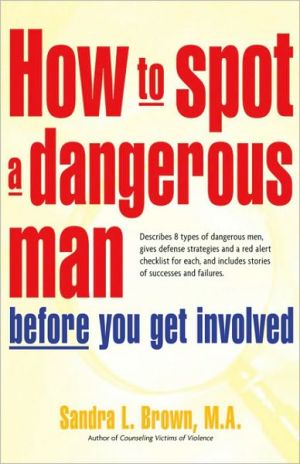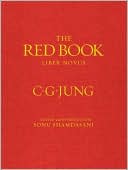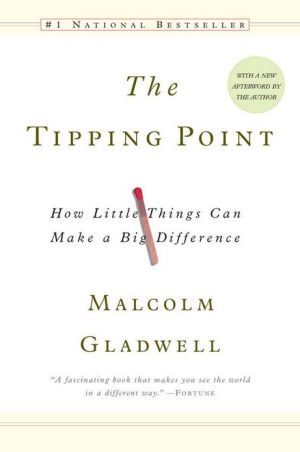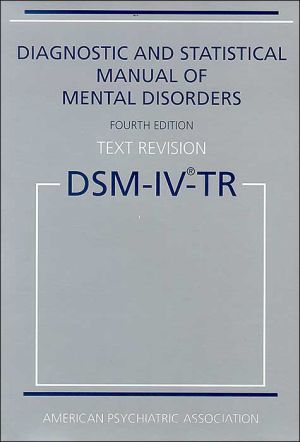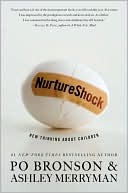How to Spot a Dangerous Man Before You Get Involved
What is a dangerous man? Most women would answer: one who is physically violent. But abusive behavior is often more insidious. Men who want mothers, not partners, who prey on lonely, passive women, who are mentally ill, addicted, or emotionally unavailable, or who won't go away when asked to leave all fall into this dangerous category. In this book women are encouraged to take responsibility for their own safety, are shown how to choose men wisely, and learn how not to make the same mistake...
Search in google:
What is a dangerous man? Most women would answer: one who is physically violent. But abusive behavior is often more insidious. Men who want mothers, not partners, who prey on lonely, passive women, who are mentally ill, addicted, or emotionally unavailable, or who won't go away when asked to leave all fall into this dangerous category. In this book women are encouraged to take responsibility for their own safety, are shown how to choose men wisely, and learn how not to make the same mistake twice. Thirteen chapters cover all the red flags of a dangerous man, offer stories of women's successes and failures dealing with each type, and provide safe ways to get out of a hazardous relationship. Armed with this valuable information, women have the tools they need to cultivate positive and healthy relationships with men.
How to spot a dangerous man before you get involved\ \ By Sandra L. Brown \ Hunter House Inc., Publishers\ Copyright © 2005 Sandra Brown\ All right reserved.\ ISBN: 978-0-89793-447-3 \ \ \ Chapter One\ Understanding the Face of Dangerousness \ Dangerous men come in all shapes and forms. They slip into our lives by appearing, at least initially, incredibly normal. There are no overt, flashing neon signs. There is no one-size-fits-all description of how they look or act. There isn't a telltale career type, eye color, or face shape. Most of the time they blend into society, looking like any other man we might consider dating. This means detection is entirely up to us. But too many women have stories that begin with "I didn't know he was like that. I didn't recognize the early signs. I believed his story."\ We know that women are battered, stalked, raped, abused, and killed every day in this country, mostly by dangerous men. We know that each day domestic-violence shelters take women in to shield them from dangerous men and from behaviors the women did not recognize in time as dangerous. Just today I was notified that one of my previous clients from a domestic-violence center was shot in the head by her dangerous man. In every town across America, women are being counseled or helped because of dangerous men-and not just men who are violent. As this book willshow, "dangerousness" comes in many types of packages.\ But we must be missing something if millions of women continue to end up with men who could be classified as dangerous. There must be something in many women's personal detection system that is offtrack. Our most well-tuned detection system often seems to exist only for other women. We ask incredulously, "Doesn't she know he beats women? ... has a drinking problem? ... has a criminal history?" We seem to be all ears, eyes, and antennas when another woman's life is at stake. But when it comes to our own life, our antennas are often short-circuited. We claim to know the reality about what happens between dangerous men and the women who get involved with them, but still we date or marry dangerous men.\ Dangerous men have always lived among us, and they always will. It's unrealistic to imagine waiting for a "dating and marriage utopia" where all choices will be safe choices. Therefore, it is up to us to learn what can and will keep us safe. It is up to us to know the signs of dangerous men and then to heed those signs. Understanding what dangerous men look and act like-what professionals call their "presentation"-is a life skill that might just keep these men out or get them out of our lives. You cannot avoid what you do not see. This book is designed to help you see, and then to help you choose differently.\ Why Women Choose Dangerous Men\ Let me define what I have come to understand the term dangerous man to mean. I use the word dangerous to describe any man who causes damage to his partner's emotional, physical, financial, sexual, or spiritual health. The damage that can be inflicted on a woman by her partner is not limited to the physical or sexual. Women tend to overlook this truth about dangerous men. They don't understand, beyond violence, what makes a man dangerous. These men harm in a multitude of ways that we need to recognize. This definition gives us a wide base from which to examine men whose presence in our lives has caused us or could cause us an emotional meltdown that might take months or years to recover from-or even worse, whose presence may cost us our lives. I purposefully leave the definition wide in order to include marginal men who are living so close to the edge of dangerousness and pathology that at any time they could become harmful in one or more of the ways listed above.\ Women want to know why we pick such men. Throughout my research women consistently asked this question. Is it because women are overcome with loneliness? Is it because of our past habits of choosing poorly? Are we programmed to believe that anyone will do? Do we like the thrill of being involved with a dysfunctional man? Do painful divorces open us up afterward to an increased risk of selecting dangerous men? Does a dysfunctional family upbringing contribute in any way to these choices? Why are we a society of women who date dangerous men? Why aren't crimes of domestic violence against women declining significantly? Surely, since the development in the 1970s of violence-intervention programs and women's services, we have learned a few things about this epidemic.\ All this raises the following questions: Have we learned to personally recognize dangerous men and how they enter our lives? Or do we merely look for dangerous men in other women's lives? Do we intimately understand this phenomenon for ourselves, and have we applied the knowledge to making meaningful change in our lives?\ The answer to these questions must be "No." The awareness that dangerous men really do exist appears to be knowledge many women don't apply to their own lives. Yet most of us claim to know something about "bad boyz." We've heard rape-prevention lectures and other women's-oriented safety information. We've grown up learning physical defense strategies but apparently not emotional ones.\ The universal awareness of the existence of dangerous men has failed to keep women safe. Could this be because the knowledge usually comes to us in the form of watered-down, naïve-sounding warnings about "bad men" from our mothers and other elders? Have we talked in mythical-seeming generalities that have failed to help women sense, see, and avoid choosing dangerous men when they show up in our lives? Whatever the reasons, the truth is we have not succeeded as families, as a feminist movement, or as a society to help women define and identify, in an understandable way, dangerous men. If we had, women would be responding to these men differently.\ It would be far easier if we could define one "type" of woman who is attracted to dangerous men. Then, all the women who match that description could be identified and educated about dangerous men. But responding to and selecting dangerous men is a pervasive epidemic that bypasses any group of stereotypically defined women. All types of women choose dangerous men. Yes, there are some childhood experiences, some family structures and behaviors, some abuse histories, some disorders that increase the possibility that a woman will respond to and date dangerous men. (Some of these specific issues affecting women are discussed in more detail in Chapter 2, on red flags, and in the chapters on the various categories of dangerous men.) But, again, we must understand that all types of women choose and respond to dangerous men.\ Minimizing and Glamorizing\ An issue that seems to affect our ability to get a handle on dangerous men is our society's inadequate language for them. Depending on the era, we nickname them "bad boyz," "cowboys," "hoods," or "thugs." The 1920s' "gangster" has evolved into the early twenty-first century's "gangsta." We have renamed dangerous men in ways that gloss over their destructive, sometimes criminal behavior. We say, "He's a little rough" or "He's had some tough times" or "He's a man's man." We talk in generalities that avoid the specifics of his character by focusing on other things: who his family is, what possessions he owns, where he lives, or what he does for a living. We avoid describing and defining the characteristics that have caused him trouble in the past and that make him a danger to women today. We minimize his past, his negative personality traits, or the absence of strong character. We dismiss these things as old history, as though they have no relevance to his current and future potential or behavior.\ We tend to see dangerous characteristics as being "normal" for men. This was by far the most prevalent defense mechanism used by women in my research. Many women who have attended my workshops lament that "there would be no one left to date" if they took my descriptions of dangerous men seriously. This implies that many women accept dangerous behaviors as a normal blueprint for how men should act. I often see women identify behavioral problems and mental-health issues in their men, but then turn around and focus only on other aspects of the relationship, such as his "availability," his "attractiveness," his capacity for "distracting" them, or maybe his helpfulness. Women repackage men's problems and call them something else.\ But why? What has society taught us about dangerous men? MTV and movies treat thugs as acceptable dating choices by portraying their romantic relationships with girls and young women as standard fare. Normal girls are often shown hooking up with abnormal guys who pose as normal guys. No wonder our culture cannot differentiate between the dangerous and the healthy. Dangerous is being made to look like the only choice, the likely choice, the popular choice for teenage girls from middle-class suburbia. Depict these "bad boyz" as financially well off-from God knows what kind of income sources-and you have an even more enticing picture.\ Of course, none of this is new. Movies from all eras have embraced the same theme: The dangerous man gets the "normal" women. West Side Story portrays Maria with a street thug. Dirty Dancing did the same in the 1980s. Humphrey Bogart frequently played a guy on the edge. We have been fed romanticized images of dangerous men for decades. Today's TV, film, and MTV images are more frequent, more suggestive, and stronger than ever. We see Britney Spears, originally a Disney Mouseketeer, slithering around on the floor surrounded by thugs who have her on a dog leash. Some Eminem videos depict young women hanging on his arm as he threatens to kill people. On the TV show The Gilmore Girls, the kids are students at Yale, but Rory keeps hooking up with a school dropout and drifter. And what about Whitney Houston, who can win music awards but can't disentangle herself from the abusive and very dangerous Bobby Brown? Or Pamela Anderson, the blonde cutie who tolerated too many years of Tommy Lee's abuse before ditching him? These are among our culture's female role models, and since they end up with dangerous guys, it makes it seem like an acceptable choice for women. We know that this type of propaganda is effective. All we have to do is turn on daytime TV to see Jerry Springer or Maury Povich portraying pathological relationships as normal and packaging them as entertainment. Is it any wonder we are confused about what and who is really dangerous?\ Developing Your Own Language for Dangerous\ One reason why a woman might date four or five dangerous men before she begins to make safer choices is that we as women do not use our own language to define dangerous in terms we understand or have experienced. Perhaps we have been living by someone else's definition of dangerous, be it a man's, our mother's, our culture's, or the media's. Whatever the source of our understanding about what makes a man dangerous, we often fail to own the description in a way that will keep us safe. Developing a personalized language based on our own experiences is key to changing our patterns. We must define what is dangerous in order to defy our earlier choices.\ We may have been told about "bad men" as we were growing up, but in order to remain safe in our dating lives we must develop a personal "knowing" that comes from our history. By "history" I mean how we developed specific traits that led us to make certain dating choices, the language we've always used to define and describe men, and our dating patterns. We need to recognize that knowing about dangerous men is not the same as knowing how to spot them before we get involved. Only by examining our history closely will we personalize the concept of what a dangerous man is and perhaps use that information to impact our future choices. This is how the information provided in this book can help women change their choices in ways that some women's programs and services have failed to do. An even wiser approach would be if we could develop a knowledge based on other women's experiences with dangerous men without having to live the experience ourselves.\ To this end, Chapters 11 and 12 will help you compare and contrast dysfunctional behaviors in relationships with healthy ones. These chapters discuss the necessity of good boundaries and show how establishing strong boundaries can insure a lifetime of better and safer choices. Chapter 11 also contains an important questionnaire, "Am I in Danger of Dating More Dangerous Men?" Once you're equipped with the information provided in the first ten chapters of the book, taking the quiz will tell you whether you're at a low, moderate, or high risk of continuing your pattern of selecting dangerous men. Finally, Chapter 13 shares some success stories from women who changed their lives and are now heeding the lessons learned from their past to avoid getting involved with dangerous men. They are living happy, fulfilling lives. These women's stories are proof that the goal of having healthier relationships is within your reach!\ As a companion to this book, I have written a workbook designed to help you go deeper into the process of identifying and avoiding dangerous men. The exercises contained in the workbook will guide you to an understanding of your specific patterns of selecting men. They will also give you an opportunity to reconnect with the red flags you've ignored in the past. The good news is you can still glean the lessons those red flags have for you, even today. Finally, the workbook will guide you through a process of creating your own personalized "do-not-date" list. When actively explored and utilized in this way, your past is your best teacher. In the future, you will compare and contrast new relationships with previous ones. By doing so, it becomes your language that teaches you how to make wiser choices, based on men you have dated and learned from.\ Categories of Dangerous Men\ My years of working with dangerous men and the women who get involved with them have led me to observe that dangerous men generally fall into certain categories. Let me introduce you to eight hotties who are dying to meet you:\ 1. The permanent clinger: He is a needy, victim-based man who will give a woman a lot of attention in return for all of his needs being met all of the time. He fears rejection above all else, so he is jealous of other people in your life. He asks you to give up your outside life and make him your only life. He convinces women that he has been wounded and that the woman can love him into wellness if she will focus only on him. He may even threaten to harm himself or "never get over" being wounded if you don't do what he asks of you. Women have the overwhelming sensation of "having the life sucked out of them" by these men.\ 2. The parental seeker: He wants a parent, not a partner. He needs you so much. In fact, he needs you to run his entire life for him. It is hard for him to do adult things like go to work, make decisions, be consistent, or act grown-up. He will shower you with lots of adoration, but he has very low functioning capabilities.\ 3. The emotionally unavailable man: He is married, separated, engaged, or dating someone else. He usually presents himself as "unhappy with" or "not quite out of" a relationship, and he is more than willing to keep you on the side. Another type of emotionally unavailable man is the man who is preoccupied with his career, educational goals, hobbies, or other interests, to the exclusion of ever having a true interest in a long-term relationship. With the emotionally unavailable man, there is always a reason why he can't fully commit to you, but he's usually happy to keep stringing you along. After all, the situation is still convenient for him as long as you're willing to keep seeing him or sleeping with him on a "casual" basis despite the fact that he can't or won't get involved in a serious relationship with you.\ 4. The man with the hidden life: He has undisclosed other lives that might include women, children, jobs, life-threatening addictions, criminal behavior, disease, or other histories that remain unrevealed to you. You only find out about these hidden lives way too late in the relationship, at which time you are already at risk.\ 5. The mentally ill man: He can look normal on the outside, but after dating him for a while it becomes obvious that "something is amiss." Most women lack the training to know exactly what is wrong, but depending on his diagnosis he may be able to convince you to stay, seeming healthy enough to deflect attention away from his mental illness. He may hold you emotionally hostage by saying that "everyone" abandons him, or he may wreak such havoc and create such instability in your life that you can't find a way to get out.\ 6. The addict: Most women do not recognize up front that he has an addiction problem. Some women never see the addiction, or they mistake it for his being a "fun-seeking kind of guy." This "fun" can include sex, pornography, drugs, alcohol, thrill-seeking behavior, gambling, food, or relationships.\ 7. The abusive or violent man: He starts out as very attentive and giving. But then Mr. Hyde appears-controlling, blaming, shaming, harming, perhaps hitting. Women who think abuse comes only in the form of a physical assault may miss warning signs of other kinds of abuse. Abuse can be verbal, emotional, spiritual, financial, physical, or sexual, or it can be abuse of the system to get his way. (Each of these is described in Chapter 9.) With an abusive or violent man, anything goes when he decides he's in control, and he will always be in control. And abusive or violent behavior always gets worse over time. What may have started out in the first months of your relationship as occasional name-calling may eventually escalate into a life-threatening assault. Men who kill their partners don't usually do so on the first date. It happens after months or years of a woman putting up with violence that grows worse and worse. How far his abuse and violence goes is dictated only by his imagination and your continued presence.\ 8. The emotional predator: This pathological man has a sixth sense about women and knows how to play to a woman's woundedness. Although his motives might be to prey on a woman's financial or sexual vulnerabilities (to name just a couple), he's called the "emotional" predator because he hunts for his victims by targeting their emotional vulnerabilities. He can sense women who have recently been dumped, who are lonely, or who are emotionally or sexually needy. He is a chameleon and can be whatever any woman needs him to be. He is very tuned in to women's body and eye language as well as to the subtle messages behind their words. He can pick up on hints about a woman's life and turn himself into what she needs in the moment. These men can turn out to be lethal.\ (Continues...)\ \ \ \ \ Excerpted from How to spot a dangerous man before you get involved by Sandra L. Brown Copyright © 2005 by Sandra Brown. Excerpted by permission.\ All rights reserved. No part of this excerpt may be reproduced or reprinted without permission in writing from the publisher.\ Excerpts are provided by Dial-A-Book Inc. solely for the personal use of visitors to this web site. \ \
Contents Foreword....................xPreface....................xiiIntroduction....................1Chapter 1: Understanding the Face of Dangerousness....................7Chapter 2: Red Flags and Red Alerts: Knowing, Sensing, Being Aware-and Following Through....................31Chapter 3: The Permanent Clinger....................59Chapter 4: The Parental Seeker....................73Chapter 5: The Emotionally Unavailable Man....................89Chapter 6: The Man with the Hidden Life....................112Chapter 7: The Mentally Ill Man....................126Chapter 8: The Addict....................145Chapter 9: The Abusive or Violent Man....................161Chapter 10: The Emotional Predator....................179Chapter 11: Signs of a Bad Dating Choice....................200Chapter 12: To Thine Own Self Be True: Learning to Heed Your Red Flags....................211Chapter 13: New Life, New Choices....................226Appendix: Descriptions of Mental and Emotional Disorders....................232Resources....................238Index....................243
